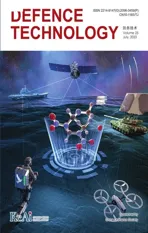A phenomenological model for plastic flow behavior of rotating band material with a large temperature range
2023-07-31YihengZhuJiweiFuLinfngQinJinghuCo
Yi-heng Zhu ,Ji-wei Fu ,* ,Lin-fng Qin ,b ,Jing-hu Co
a School of Mechanical Engineering, Nanjing University of Science and Technology, Nanjing, 210094, Jiangsu, China
b Northwest Institute of Mechanical and Electrical Engineering, Xianyang, 712099, Shaanxi, China
c School of Materials Science and Engineering, Nanjing University of Science and Technology, Nanjing, 210094, China
Keywords:Rotating band Plastic flow behavior Large temperature range Phenomenological model
ABSTRACT The plastic flow behavior of the rotating band material is investigated in this paper.The rotating band material is processed from H96 brass alloy,which is hardened to a much higher yield strength compared to the annealed one.The dynamically uniaxial compression behavior of the material is tested using the split Hopkinson pressure bar (SHPB) with temperature and strain rate ranging from 297 to 1073 K and 500 to 3000 s-1,respectively,and a phenomenological plastic flow stress model is developed to describe the mechanical behavior of the material.The material is found to present noticeable temperature sensitivity and weak strain-rate sensitivity.The construction of the plastic flow stress model has two steps.Firstly,three univariate stress functions,taking plastic strain,plastic strain rate and temperature as independent variable,respectively,are proposed by fixing the other two variables.Then,as the three univariate functions describe the special cases of flow stress behavior under various conditions,the principle of stress compatibility is adopted to obtain the complete flow stress function.The numerical results show that the proposed plastic flow stress model is more suitable for the rotating band material than the existing well-known models.
1.Introduction
The rotating band,also known as the driving band,is a key part of the interface between the barrel and projectile.The deformed band interacts with rifling to guide the projectile to spin with a significantly angular velocity,thus good flight stability of the projectile in the air can be achieved.Consequently,a hardened H96 brass alloy with good ductility and relatively high yield strength serves to be a satisfactory band material and is widely used in the current ammunition system.At the beginning of combustion process,the rotating band provides a suitable resistance to the movement of projectile.Afterwards it is forced into the geometric boundary of the rifling and overcomes the interference fit between the band and barrel.Then,the rotating band material with plastic flow is filled between the clearance of the barrel and projectile,and makes the combustion gas sealed to maintain the chamber pressure to some extent.The rotating band is subjected to complex loading histories in the bore,and the strain hardening and thermal softening effects exist simultaneously.It is essential to characterize the mechanical properties of rotating band and establish a realistic constitutive model.
Great efforts have been made on the study of plastic flow behavior of metals.Based on different empirical or physical arguments,various relations connecting the flow stress with the equivalent plastic strain,equivalent plastic strain rate and temperature possess their own application range.The prediction accuracy,required experimental data,and applicability for numerical calculation are the major factors to evaluate the relations [1].The plastic flow stress model can generally be divided into two categories: (1) phenomenological model,in which the flow stress function is constructed empirically;(2) physically-based model,in which the flow behavior is connected to the evolution of microstructure.Phenomenological plastic constitutive models are usually concise and have been widely used by commercial softwares.The most well-known phenomenological model should be the Johnson-Cook (JC) model [2,3],whose parameters have clearly physical meanings.It naturally brings numerical conveniences by fully decoupling the temperature,strain and strain rate effects.However,the JC model cannot perform well for some situations with complex material nonlinearities.The Khan-Huang-Liang(KHL) model [4-8] contains a strain and strain rate coupling coefficient and can properly describe the rapidly increasing yield strength at high strain rates.The Steinberg-Cochran-Guinan-Lund(SCGL) model was developed for high strain-rate situations firstly[9] and then extended for low strain-rate situations [10].The hardening/softening laws,revealed by the experimental data,are the main difference between various phenomenological models and determine the application range of these models [11-13].
On the other hand,physically-based models focus on micromechanical mechanisms,and their parameters are more difficult to determine.Many physically-based models have been developed until now.The Zerilli-Armstrong (ZA) model [14-16] is based on the simplified dislocation dynamics.The initial yield strength is determined by the chemical composition and initial dislocation density of the material,and a complete coupling effect of strain,strain rate and temperature is included.The Mechanical Threshold Stress (MTS) model [17] divides the flow stress into three parts:athermal component,thermal-assisted dislocation component,and deformation dislocation component.A modified Voce law is introduced to describe the thermal activation behavior,and the maximum of strain rate is limited to 107s-1.The Preston-Tonks-Wallace (PTW) model [18] can be applicable for extreme conditions:strain-rate up to 1011s-1and temperature up to the melting point.Analogously,a modified Voce law is used in the thermal regime,and both the saturation stress and yield stress can be predicted.As the evolution of microstructures has to be known before using these physically-based models,the numerical calculation becomes much more complex than phenomenological models.
In applications with a wide range of temperature or strain rate,accurate predictions using only one set of parameters for all loading conditions are difficult to achieve.Thus,expansions and modifications of existing models have been attempted.Zhang et al.[19]proposed a new model combining the JC model and KHL model,which introduced more material parameters to describe more complex strain rate effects.Jia et al.[20] introduced a strain Voce term into the JC model,and the strain rate term was extended to a higher order.Moreover,many adjustments have been made to revise the coupling form in empirical models based on experimental data [21-25].For physically-based models,the hardening form is distinguished by crystal arrangements,and the application range of temperature and strain rate is extended through great efforts of many researchers[26].Abed and Voyiadjis[27]suggested a new relation of thermal activation mechanism on the physical bases of the ZA model,and simulations showed better accuracy than the ZA model especially at high temperatures.Kim and Shin[28] modified the strain hardening term of the PTW model for larger strain range applications,and the prediction of the plastic flow behavior of tantalum in wide ranges of strain,strain rate,and temperature is highly accurate.Those extended models improve accuracy by adding parameters,which leads to the increase of the difficulty of fitting and the demand for experimental data[29].The physically-based models have a premise of the determination of microscopic parameters which brings a higher threshold for engineering application.
In this paper,the focus is on the constitutive model which is a general mechanical law of this given material.That is,the corresponding experimental research should include the possible working conditions instead of completely reproducing the mechanical structure or working environment of projectile.The materials,experimental setups,and typically experimental results are introduced in Section 2.The method to construct the coupled plastic flow stress model is described in Section 3 in detail.In section 4,this empirical plastic flow stress model is validated with experimental data,and then the main conclusions of this paper are summarized in Section 5.
2.Experiments and specimens
As shown in Fig.1(a)and Fig.1(b),the rotating band material in the present study is a kind of hardened H96 brass alloy.The chemical composition of the H96 brass alloy is given in Table 1.All specimens were machined into cylinders of Φ8 × 5 mm2.The dynamic compression experiments were conducted with plastic strain rate of 500 s-1,1000 s-1,2000 s-1and 3000 s-1using the SHPB device as illustrated in Fig.2.A light-gas gun with high pressure nitrogen was adopted to speed up the bullet.

Table 1 Chemical composition of the rotating band material.

Fig.1.(a) Separated rotating band,(b) The fired projectile with rotating band.
As shown in Fig.3,a ceramic holding furnace was installed to surround the specimen to acquire high temperature conditions.A series of heating Ni-Cr resistance wires were embedded in the ceramic tube and an insulating cylinder is used to prevent the heat loss.The specimens was mounted in the center of the furnace,and sandwiched between the incident bar and the transmission bar.Tests were done for six different temperatures of 297 K,478 K,678 K,778 K,878 K and 1078 K.Fig.4 shows the specimens after tests at the temperature of 673 K for four strain rate conditions.The heating time and holding time were both controlled to 15 min,and the temperature of the specimen was uniform tested by temperature sensors.In this way,the whole specimen has the same temperature which is convenient for constitutive modeling.

Fig.3.The heat holding furnace.

Fig.4.Deformed specimens at conditions of 673 K with different strain rates.
Fig.5 shows the nominal stress and strain curve with plastic strain rate of 500 s-1and temperature of 297 K.In actual experiments,five groups of repeated data were obtained under each working condition,and then averaged as the valid experimental results.Finally,a number of points on the averaged curves were chosen for the evaluation of constitutive model,and all experimental data below are processed in the same way.
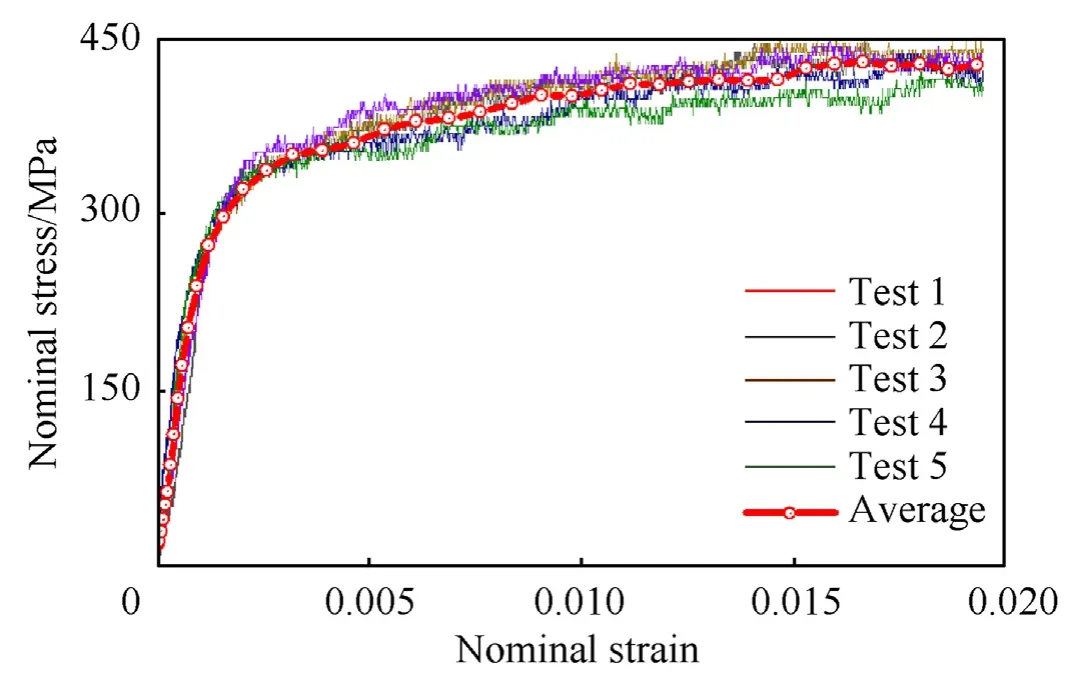
Fig.5.The repetitive dynamic compression experiments with plastic strain rate of 500 s-1 and temperature of 297 K.
The actual loading time is less than 20 ms,and the temperature rate might be an important factor to affect the mechanical behavior.Many experimental research has been made on the effect of temperature holding time on hardness or grain size of copper alloy[30-32].The results show that the holding time of half an hour has little effect on the flow stress.Therefore,the temperature rate effect is not introduced in this paper.
3.Construction of the plastic flow stress model
In this paper,the flow stress is macroscopically regarded as a function of strain,strain rate and temperature without introducing extra internal variables or microscopic parameters.In section 3.1,the forms of stress and strain in the flow stress function are explained.The macroscopic description of univariate flow stress function is put forward form obvious experimental trend in section 3.2.The complete flow stress function is derived in section 3.3.This class of phenomenological constitutive model is based on the fundamental framework of thermodynamics [33-36].
3.1.Kinematics and elastoplastic decomposition
For the deformation involved in the experiments in this paper,the displacement is expressed in a Lagrangian form as
where X=(X1,X2,X3)is the coordinate in the initial configuration R0,x=(x1,x2,x3)is the coordinate in the current configuration R,andui(i=1,2,3)represents the displacement alongXidirection.
For the uniaxial loading condition,the specimen is considered to be compressed uniformly and keeps the cylindrical shape during the test.Thus the displacement can be further expanded asu1=u1(X1,t),u2=u2(X2,X3,t),u3=u3(X2,X3,t).For the uniaxial loading inX1,the above simplification is reflected in the component ofdeformation gradient thatF11=andF12=F13=F21=F31=0.
The deformation gradient vector is expressed as
The initial configuration is regarded as the reference configuration.In this work,the large deformation behavior of the specimen has to be taken into account,and the Green strain is used
where I is the second order unit tensor.Compared to the nominal strain tensor ε=the quadratic term of deformation gradient is considered in the Green strain tensor E.
The second kind of Piola-Kirchhoff (2nd PK) stress tensor T,which is a symmetrical stress tensor in the reference configuration R0,is adopted
where σ is the nominal stress tensor.In the experiments,the nominal stress component σ11and nominal strain component ε11are the directly measured data.The Green strain componentE11and 2nd PK stress componentT11can be correspondingly obtained using Eq.(3)-Eq.(6).
Then,the deformation gradient can be expanded into
where λ1is the component of the stretch tensor inX1
From Eqs.(3)-(6),the Green strain componentE11and 2nd PK stress componentT11can be correspondingly obtained as
From the compression test for each working condition,Young's modulus and initial yield strength were calculated at the linear elasticity region.In the case of unidirectional compression and single load,the elastic part is approximately a linear process,and the additive decomposition of strain is adopted in this paper
3.2.Univariate stress functions
In order to construct the flow stress model,the influences of the three independent variables strain,strain rate and temperature on the flow behavior is studied individually.That is to say,the flow behavior of the material with respect to one of the three variables is extracted from the experimental data by fixing the other two variables,and corresponding flow stress function (termed as onevariable flow stress function) is derived.Then,the final flow stress function is obtained from the three one-variable functions.
3.2.1.Strain hardening effect
The fitted stress-strain curves using Eq.(11) shows negligible discrepancy from the experimental results for different loading conditions,such as the combinations of strain rate and temperature given in Fig.6.It is should be noted that parametersa1andb1are negative,whilec1is positive.As only the effect of strain hardening on the plastic flow stress is considered in Eq.(11),the parametersa1,b1,c1andd1are dependent on temperature and plastic strain rate.For the case of this univariate function,curve fitting with high accuracy is achieved.It is worth mentioning that high accuracy is a prerequisite for the establishment of coupling relationship in Section 3.3.
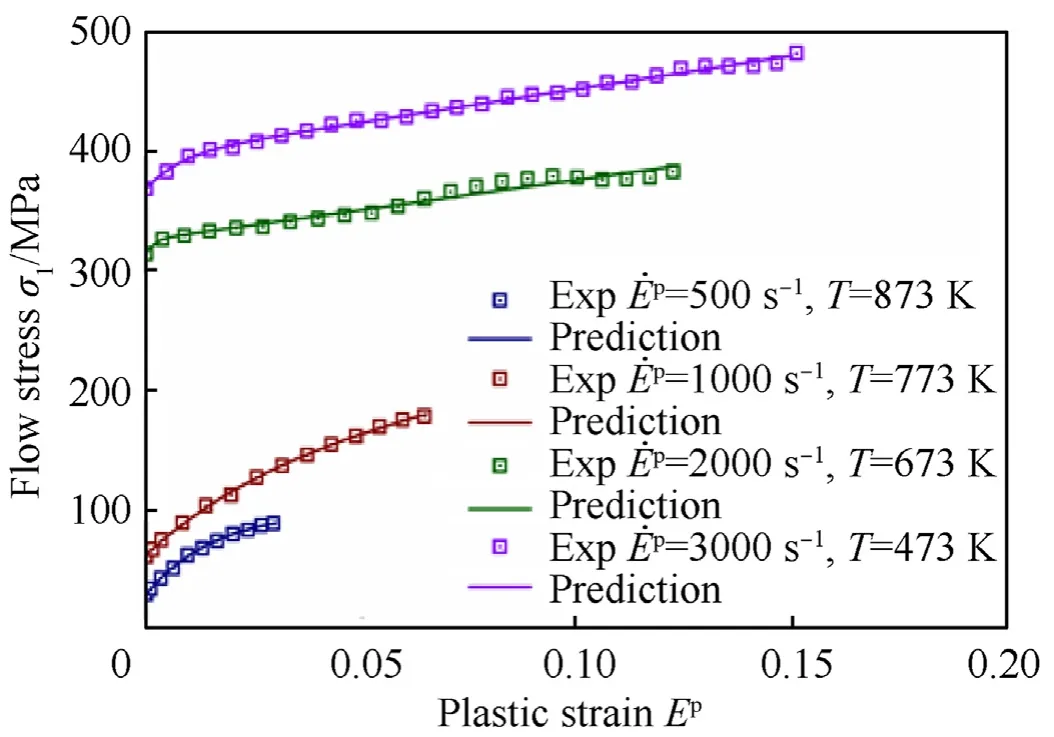
Fig.6.Plastic strain hardening effect under different working conditions.
Thus,the strain hardening Eq.(11) can be rewritten as
Especially,the initial yield stress is
3.2.2.Strain rate hardening effect
In order to illustrate the effect of strain rate,the curves of flow stress versus logarithm of plastic strain rate are depicted in Fig.7.Fig.7(a)shows the results for different plastic strains with the same temperature,while the results with the same deformation level under various temperatures are shown in Fig.7(b).It is obvious that a linear correlation between the logarithm of plastic strain rate and flow stress exists.
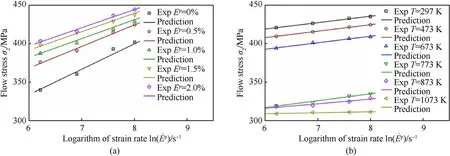
Fig.7.Plastic strain rate hardening effect with given working conditions: (a) under temperature of 297 K;(b) under plastic Green strain of 0.2%.
Thus,the plastic strain rate hardening function σY|Ep,T=σ2()|Ep,Tcan be presented as
wherea2andb2are introduced material parameters.Furthermore,it can be seen from Fig.7(a)that the slopes of the curves are almost the same,which means thata2is independent of plastic Green strainEp.Thus Eq.(14) can be expanded to
However,Fig.7(b) shows that the slope of curvea2is clearly dependent on temperature.Eq.(14) can also be expanded to
The combination of Eq.(15) and Eq.(16) leads to
3.2.3.Thermal softening effect
whereTmeltis the melting temperature.
Fig.8(a) shows the results for different plastic strains with the same plastic strain rate,while the results with the same plastic strain under various plastic strain rates are shown in Fig.8(b).The values of the partial derivative are negative in all conditions,and the derivatives in the temperature range of 673-773 K are obviously less than those in the ranges ofT<673 K andT>773 K.
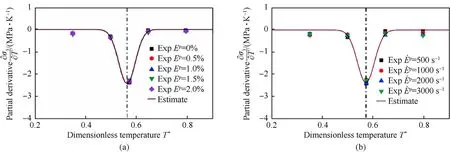
Fig.8.Partial derivative of plastic flow stress to dimensionless temperature: (a) plastic strain rate at 500 s-1;(b) Plastic strain at 0.
Fig.9 shows the flow stress versus dimensionless temperature,and the different plastic strain and plastic strain rate cases are shown in Fig.9(a) and Fig.9(b),respectively.The flow stress decreases with temperature from 297 to 1073 K monotonically.It can also be seen that the material softens gradually with the increase of temperature in the ranges ofT<673 K andT>773 K,while the flow stress drops dramatically in the temperature range of 673-773 K.This special phenomenon of temperature sensitivity is considered to be caused by phase transformation of the alloy at 60% of the melting point.
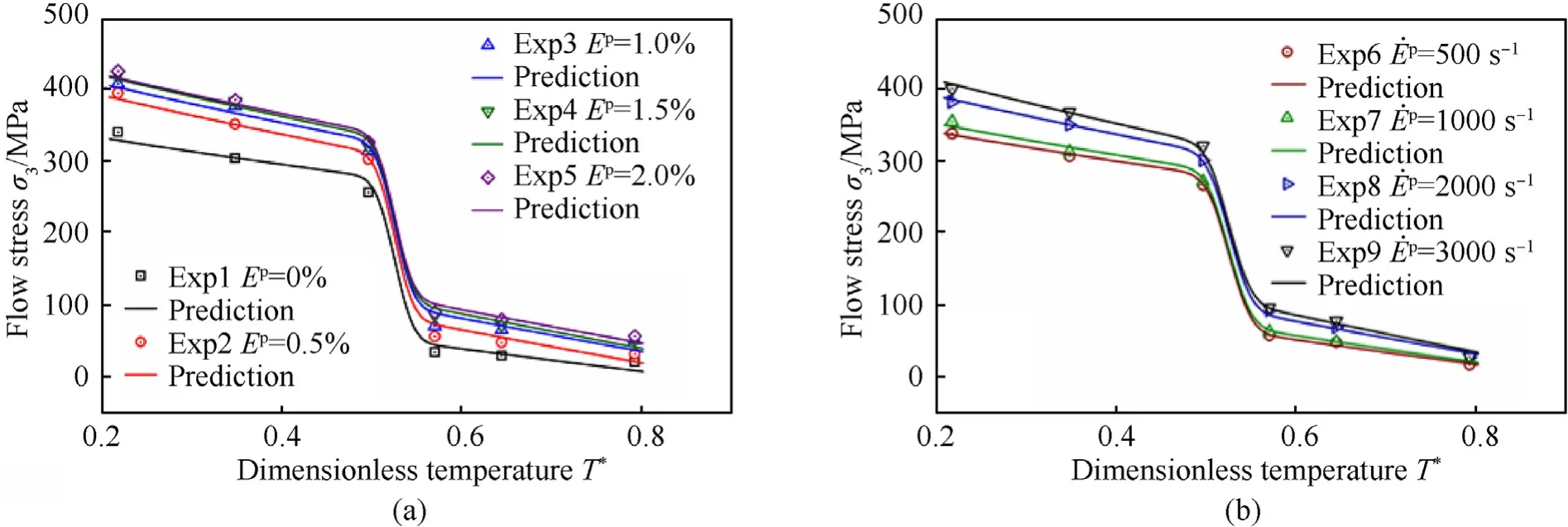
Fig.9.Temperature effect with given working conditions: (a) plastic strain rate at 500 s-1;(b) Plastic strain at 0.
An additive decomposition is introduced to describe the two mechanisms in the softening function:
where σ3,global(T)represents the global thermal softening term,and σ3,global(T)represents the local softening term in the temperature range of 673-773 K to which more attention should be paid.According to Fig.8,a Gaussian function is used to describe the partial derivative of local stress term with respect to temperature,which is expressed as
where α,β and γ are material parameters.
Integrating Eq.(20) leads to
On the other hand,a power function of 1-T*e3,is introduced to describe the global softening term as
wherea3,b3,c3,d3,e3andf3=η3+κ3are material parameters to be determined.Similar to the situation in Eq.(14),all introduced parameters in Eq.(27)cannot be regarded as constants,and further analysis of their expansion forms should be conducted.
From Fig.8(a),the curves of partial derivative of flow stress to temperature versus dimensionless temperature for five different plastic strains have a consistent trend.The five fitting curves coincide with each other and share the same axis of symmetry atT*=0.57,which means the parameter γ is a constant.The extreme value of ∂σ3/∂Tfor these five plastic strains almost equal to -2.41 MPa/K,which means the parameter α is a constant.In addition,the Gaussian function has a fixed width which means the parameter β is a constant.From Eq.(22)-Eq.(24),the parametersa3,b3andc3are also constants.
From Fig.9(a),in the ranges ofT<673 K andT>773 K,the flow stress decreases gradually,and the shape of these five curves are similar.It can be considered that the small changes of the curve slope are determined by parameterd3,and the indexe3is unchangeable.Hence the power of the dimensionless temperaturee3is regarded as a constant,and the remaining two parametersd3andf3are strain-dependent.Then the expansion form of Eq.(27) on plastic strain is obtained as follows:
The unknown parameters in Eq.(28)calculated for Fig.9(a)are shown in Table 2.

Table 2 The fitted parameters in Eq.(28) for Fig.9(a).
For different plastic strain rate conditions,in the same way,the expansion form of Eq.(27) on plastic strain rate is
Combination of Eq.(28) and Eq.(29) leads to
3.3.Complete stress function
In section 3.2,three univariate stress functions are proposed based on the experimental phenomena.They are strain hardening of Eq.(12),strain rate hardening of Eq.(17)and thermal softening of Eq.(30),and have been verified by experimental data.As the three functions σ1,σ2and σ3are derived from the same flow behavior and can be regarded as special forms of one flow stress function,the complete flow stress function will be obtained in this section according to the equality of the three functions and their derivatives.
Firstly,derivatives of Eq.(12),Eq.(17)and Eq.(30)with respect to plastic strain rate are obtained
Clearly,the above three formulas should be exactly identical for any working conditions,which indicates the first two terms involvingEpin Eq.(31)must vanish.Thus,the following equations can be derived:
Considering the conclusion in Section 3.2.1 that parametersa1andb1are negative,Eq.(34) leads to
Thus the material parametersa1,b1,c1andd1are determined as
wheree1(T)is a temperature-dependent material parameter andf1is a constant.Then the strain hardening relationship Eq.(12) is reorganized as
Secondly,the continuous derivation of Eq.(17)and Eq.(30)with respect to strain and strain rate is conducted
Equality between Eq.(44) and Eq.(45) leads to
Eq.(46)and Eq.(47)indicate that the plastic stain and strain rate have no coupling effect for the materials studied in this paper.Consequently,the material parametersd3(Ep,˙Ep)andf3(Ep,˙Ep)can be expanded into a completely decoupled form
Derivatives of Eq.(48)and Eq.(49)with respect to plastic strain rate are
Moreover,Eq.(32) equals Eq.(33) for any strain value.Thus,with consideration of Eq.(50) and Eq.(51),one could have
If the partial derivatives in Eq.(45) is set to be
The parametersd3βandf3βcan be integrated as
where the constantsL,M,OandPare material parameters to be determined.And,the parametera2in Eq.(52)can be expressed as
Hence Eq.(30) is reorganized as
Lastly,the derivation of Eq.(43) and Eq.(58) with respect to temperature results in
It is clear that all the terms in Eq.(60) are completely multiplicative decomposed without coupling effect of strain hardening,strain rate hardening and thermal softening,and all the material parameters are dependent on one independent variable or none.As Eq.(59) obeys a similar law,it is assumed that material parameterb1in Eq.(59) should be independent ofTto decouple the exponential term.Thus the addition of strain-related terms in Eq.(59)should equal to strain-related term in Eq.(60),while the strainirrelevant terms in the two equations should also be equal.Thus,one could have
Integrating of Eq.(61)and Eq.(62),with the help of the similar form in Eq.(48) and Eq.(49),leads to
whereg1,h1,i1,j1andk1are introduced material parameters.
Up to now,all the parameters in σ1have been expanded,and Eq.(43) can be rewritten as
For convenience,Eq.(68) is reorganized to be
wherea,b,c,d,e,f,g,h,i,j,k,landmare constant parameters independent of strain,strain rate and temperature.
4.Fitting results
In this section,the experimental data for all working conditions were used to validate the accuracy of the plastic flow stress model.A global optimization method based on the genetic algorithm is used for the parameter fitting [27].The data in Fig.10 are fitted in accordance with the constitutive Eq.(69),and the obtained parameters are shown in Table 3.
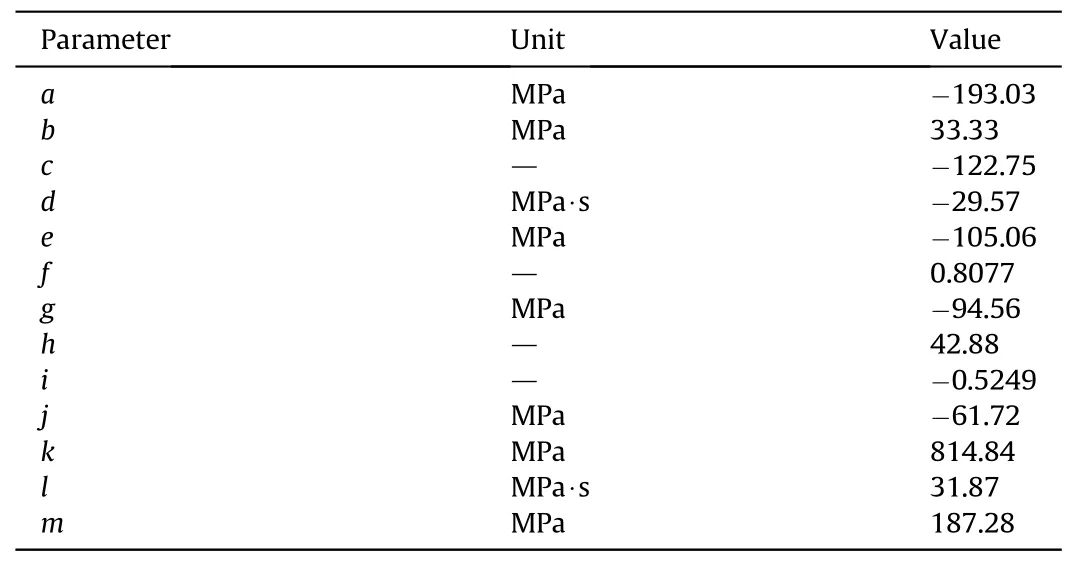
Table 3 Material parameters of the plastic flow stress model in Eq.(69).
Firstly,the values of typical thermal parameters can be determined in section 3.2.3 as:f0=0.8,g0=-111,h0=42 andi0=0.5.Secondly,some constraint conditions can be determined according to the physical meaning.For the strain term,rearrange Eq.(69) as
Based on the conclusions of parameters of linear and exponential strain term in Section 3.2.1,there are constraints as following:
For the strain rate term,a constraint can be obtained in the same way
Finally,calculate the sum of absolute value of the difference between fitting values and true values.A genetic algorithm is used to search a group of optimization parameters to minimize the sum of the absolute value of errors.
The errors between the fitting results and experimental results are shown in Table 4 and Table 5 for different temperatures and plastic strain rates.It is seen from Table 4 that the error in high temperatures is larger than those at room temperature,and similar conclusion has been presented in Ref.[39].For strain rate,Table 5 shows that the prediction error is as high as 5.18% for strain rate of 3000 s-1.Generally,the overall prediction error is significantly reduced to 4.52% with the adoption of the constitutive equation proposed in the paper,and the accuracy is improved obviously,compared with the existing popular models and their extended forms [39,29].The coefficient of determination is 0.994 for all working conditions as shown in Fig.11.It confirms the capability of this model within the broad temperature range.Especially,the rapid stress reduction from 673 to 773 K is described appropriately.

Table 4 The average relative error between prediction and experimental data for different temperatures.

Table 5 The average relative error between prediction and experimental data for different plastic strain rates.
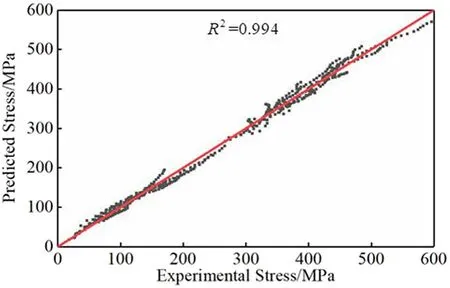
Fig.11.Global error of experimental and prediction data.
5.Comparison of different models
In this section,different plastic flow stress models will be applied to the rotating band material,and the temperature related items will be analyzed especially.This comparison will reflect the necessity and advantage of the model proposed in this paper.
The Johnson-Cook model [2,3] has been widely used in engineering,and its physical meaning is clear.As shown in the following:
whereTroomis the melting temperature.Three items on the right side are respectively expressed as the strain strengthening,strain rate strengthening and temperature softening effect.Especially,these three terms are completely decoupled which leads to a concise form,and the number of material parameters is only 5.
Fix the strain and strain rate and combined with Eq.(18),the JC model reduces to a power function of dimensionless temperature:
As an empirical model,the KHL model[4-8]is also widely used.For the nonlinear rate hardening,there is a more complex form with a coupling effect of strain and strain rate
Accordingly,the number of parameters is increased to 6.Fix the strain and strain rate,the KHL model reduces as
For the physically-based models,the influence of temperature change is specially considered in the NNL model [40].
Because the temperature form is more complex,the number of parameters is 8.Where,k is the Boltzmann's constant,G0is the energy to overcome the slips.For pure copper,usuallyk/G0is 2×10-5K-1[40,41].The reference strain rate ˙Ep0 is 2× 1010s-1,which is related to the dislocation density the mode of the Burgers vector.The flow stress decreases with the increase of temperature,soa(T)is constructed as follows [41,42]:
Fix the strain and strain rate,the NNL model reduces as
For the needs of actual mechanical engineering,the author tried to extend the existing model to apply in the rotating band material.A method of segmenting the temperature to describe the nonlinear softening effect of this temperature based on JC model [29].With the temperature from 673 to 773 K,there is a rapid stress softening.Hence,the parameters are expanded to a piecewise function of temperature for stress continuity.Construct a proportional function
Whent∈[0,1],f(t)is monotonously decreasing,andf(t)∈[0,1].Whent=0 ort=1,take df/dt=0.Specify a standardization of temperature between 473 K and 773 K.
The modified JC model is as follows
where
To describe the details of the temperature effect,the number of parameters is extend to 20,and the data matching is cumbersome in this case.Of course,more parameters mean the possibility of improving accuracy.
Fig.12 shows the results with plastic strain rate at 500 s-1and plastic strain at 0.The models listed above are involved in the application,and a local optimization is adopted firstly.

Fig.12.Temperature effect with plastic strain rate at 500 s-1 and plastic strain at 0 under the application of different models.
As shown above,the single form of a power function as JC model and KHL model can’t describe this temperature sensitivity.As for NNL model,although a more complex form of temperature softening term is considered,it still can’t describe this rapid softening phenomenon.The accuracy of these models is inadequate.The modified JC model proposed by the author is relatively applicable but the disadvantages are also obvious.It has too many parameters,and the segmented interval selection requires more experimental data.The continuity of function needs to be concerned especially on the segmentation method,and there is a risk of over fitting.
A global optimization is implemented as shown in Fig.13.From the results below,a conclusion can be found that a good result of the local optimization is always a precondition of the global optimization.There is a lack of further description of temperature softening in the three existing models.Their errors are shown in Table 6.The accuracy of segmented model is acceptable,but the limitations in practical application are existential.

Table 6 The average relative error between prediction and experimental data for plastic strain rates 500 s-1.

Fig.13.The predicted stress-strain curves with plastic strain rate at 500 s-1 under the application of different models:(a)The JC model;(b)The KHL model;(c)The NNL model;(d)The modified JC model.
This paper develops a new plastic flow stress model for rotating band material,and the effect of temperature on strength is considered especially.Different from the extended models,this model does not involve micro variables and the requirement for the amount of experimental data is not much.Combined with the experimental phenomena,a form of partial coupling is adopted,and the number of parameter is 13.Although there are more parameters than those classical models,the parameters have clear physical meanings and the thermal parameters are easy to obtain in a local optimization as shown in Section 3.2.3.This model doesn't need too much experimental data compared with those modified models.The experiment data with 6 temperatures and 4 strain rates are enough to get a good global optimization result as shown in Section 4.
6.Conclusions
The dynamic plastic flow behavior of the rotating band is investigated in this paper.Series of uniaxial compression tests were carried out using a SHPB device for different strain rates (from 500s-1to 3000s-1) and temperatures(from 297 K to 1073 K).The experimental results illustrate a strong nonlinearity of stress to temperature,and the thermal softening effect in the range of 678 K-778 K is more sensitive than that other temperature ranges.The strain rate hardening effect is relatively inconspicuous and almost disappeared at the temperature of 1073 K.Based on the framework of thermodynamics,a phenomenological model is developed according to the experimental data.The strain,strain rate,and temperature are taken as three independent variables for the construction of the univariate stress functions,respectively.The univariate stress function is a special form of the plastic flow stress when fixing the other two variables.Thus,a series of stress compatibility conditions are derived,and the complete form of plastic flow stress function is obtained.Finally,the constant parameters in the constitutive equation are fitted,and the result shows that the constitutive relation proposed in this paper could describe the flow stress behavior of rotating band material accurately.Especially,the abrupt drop of flow stress at high temperatures is well treated.
Declaration of competing interest
The authors declare that they have no known competing financial interests or personal relationships that could have appeared to influence the work reported in this paper.
Acknowledgements
The authors would like to acknowledge the support from National Natural Science Foundation of China (Grant Nos.11702137and U2141246).Also Dr.Pengfei Wang from University of Science and Technology of China is greatly acknowledged on experimental setups.
杂志排行
Defence Technology的其它文章
- In-plane and out-of-plane quasi-static compression performance enhancement of 3D printed re-entrant diamond auxetic metamaterial with geometrical tuning and fiber reinforcement
- Flame behavior,shock wave,and instantaneous thermal field generated by unconfined vapor-liquid propylene oxide/air cloud detonation
- Frequency domain analysis of pre-stressed elastomeric vibration isolators
- Burning surface formation mechanism of laser-controlled 5-aminotetrazole propellant
- Blast disruption using 3D grids/perforated plates for vehicle protection
- Nonlinear tight formation control of multiple UAVs based on model predictive control
